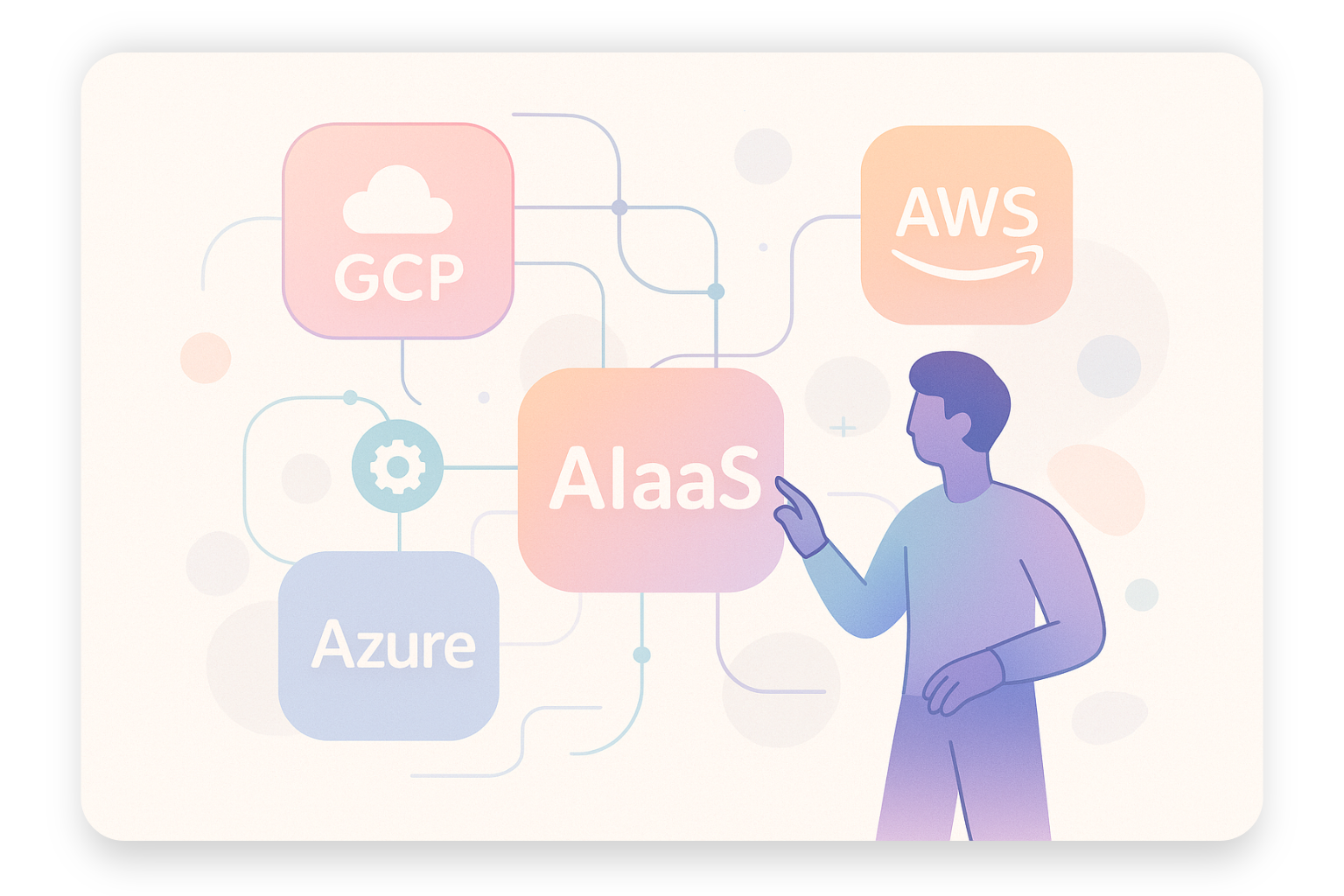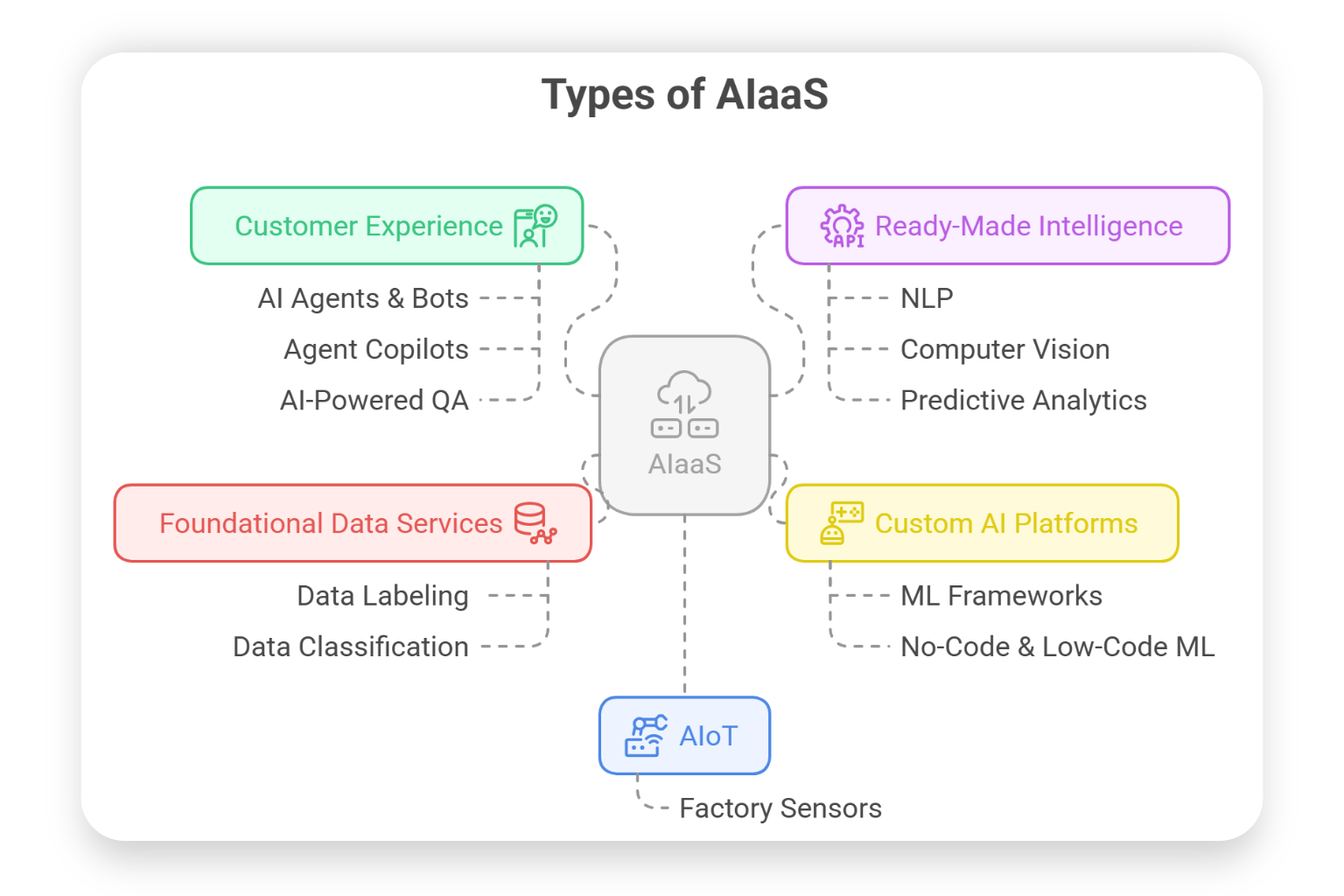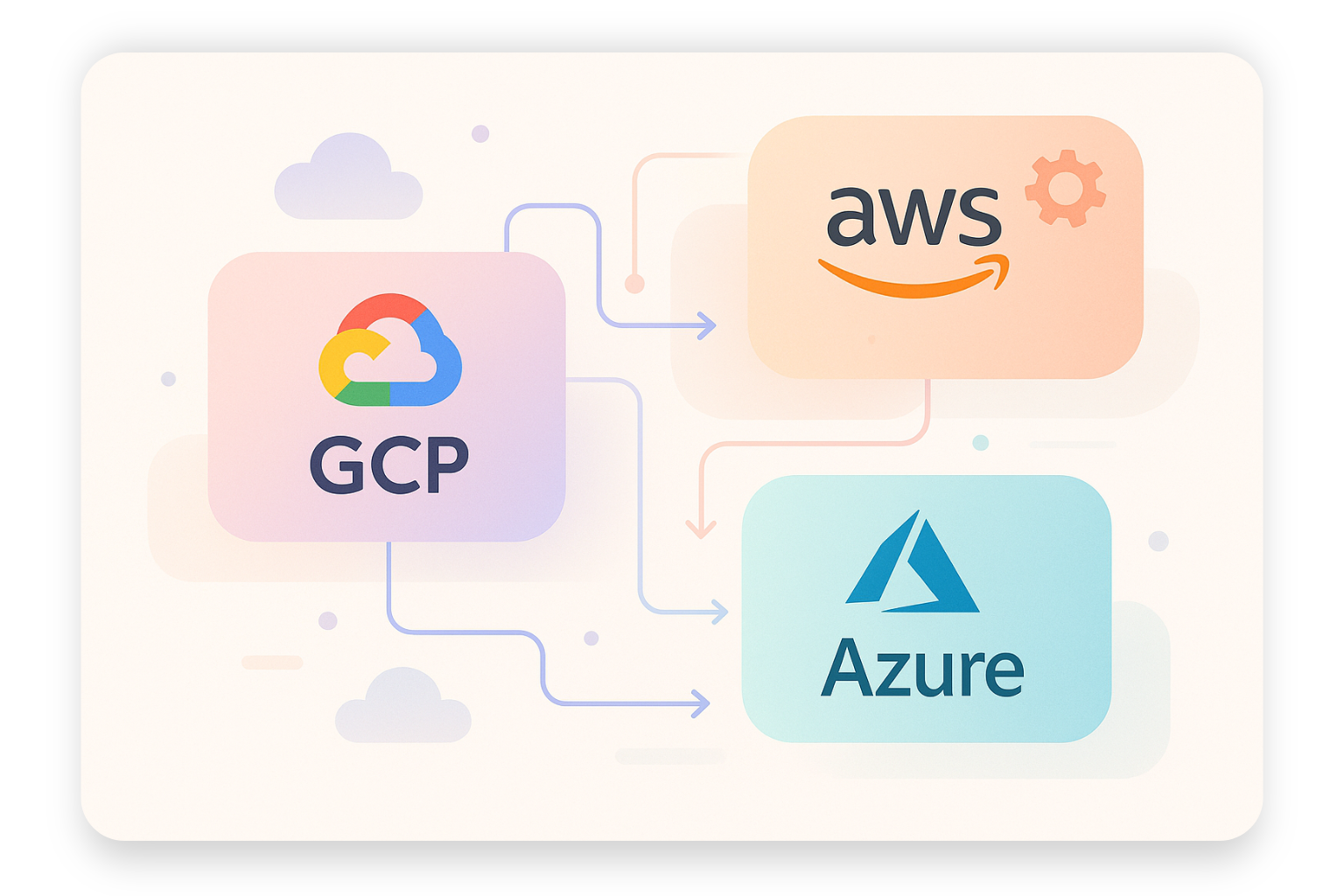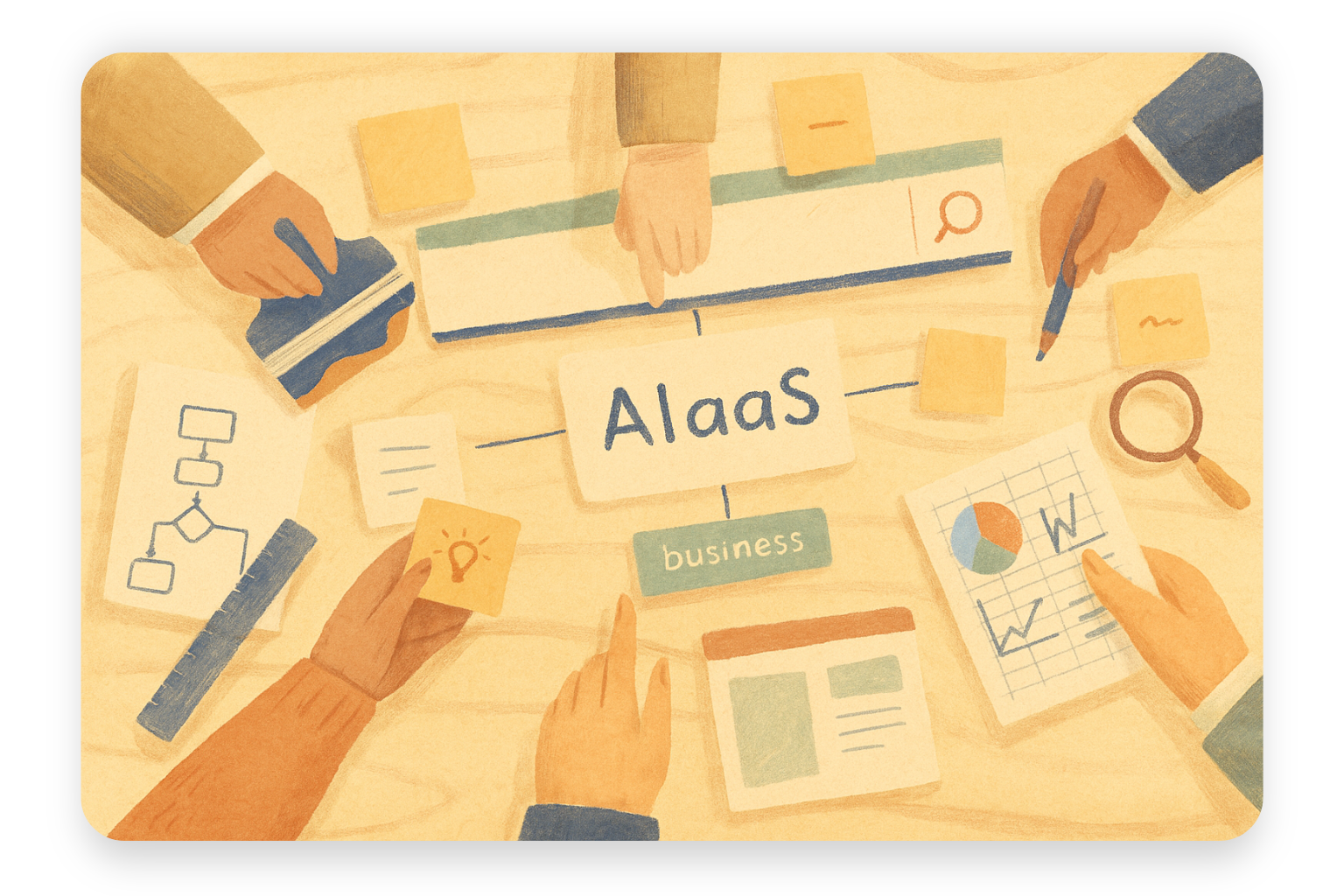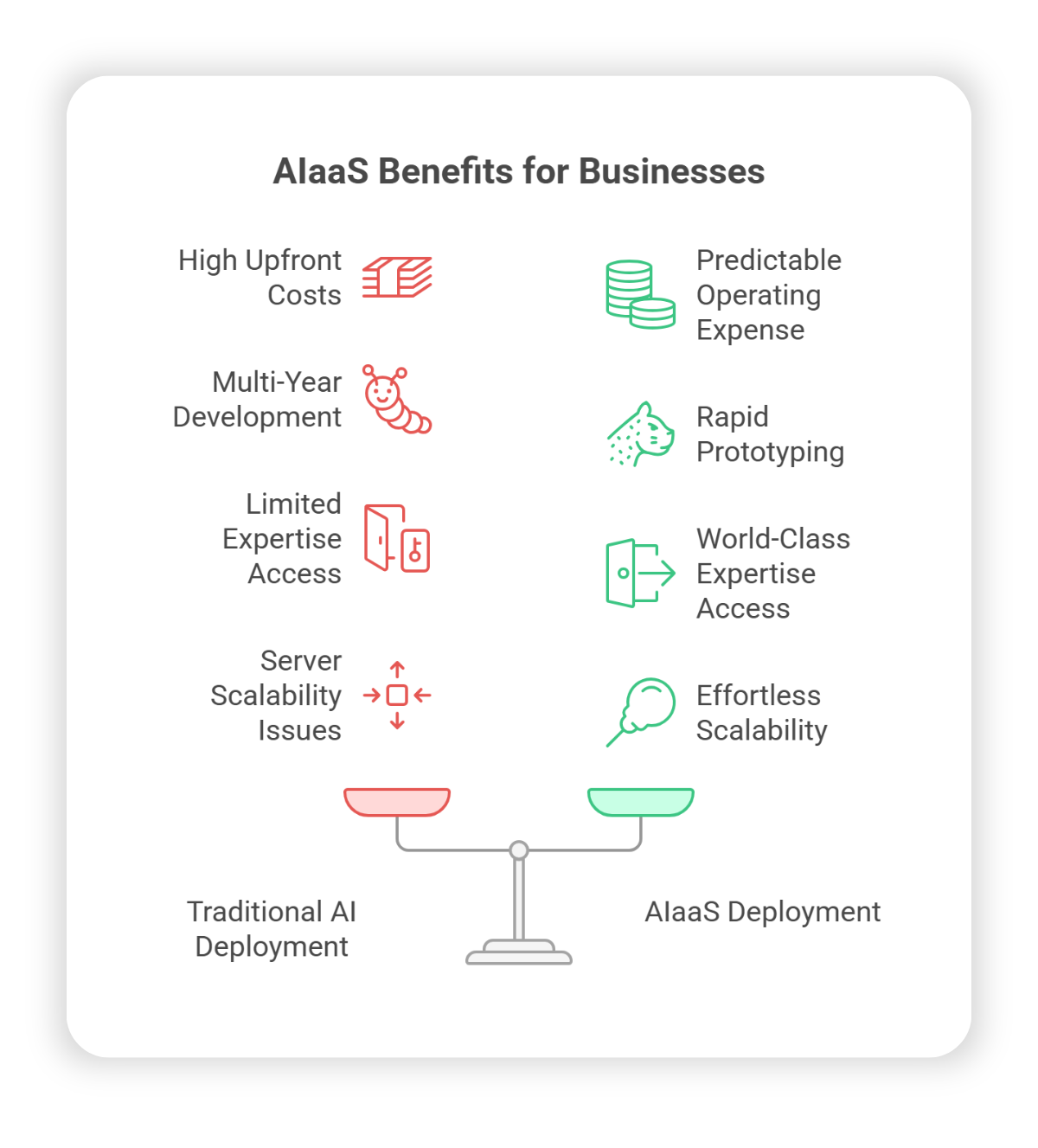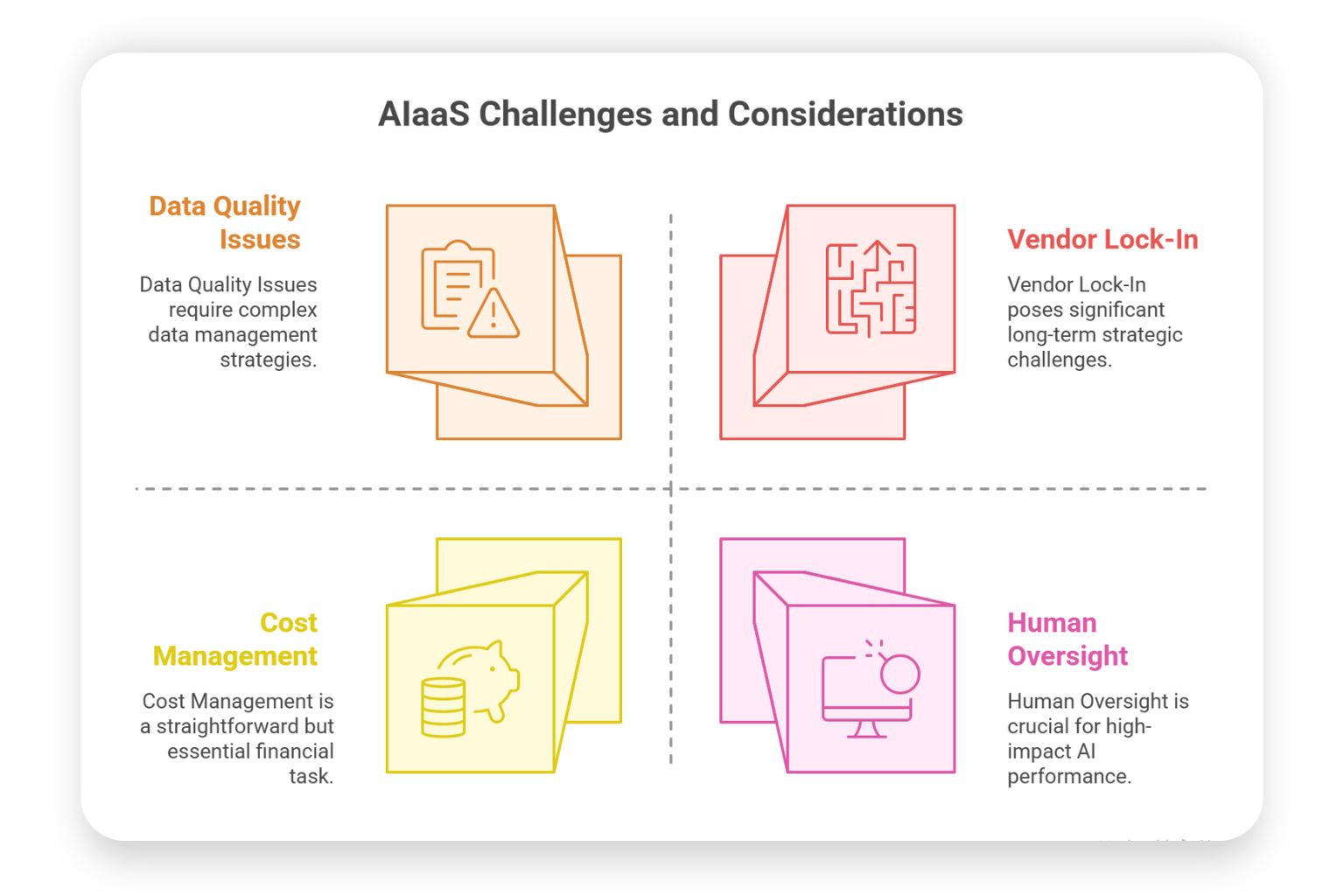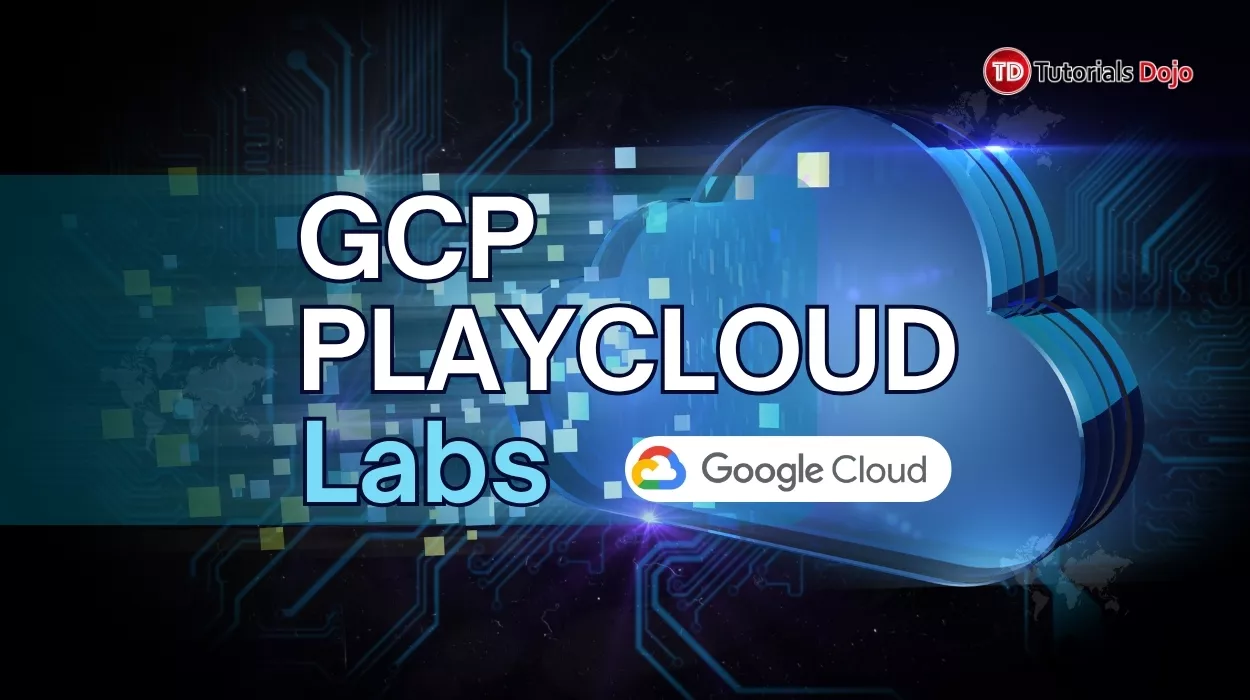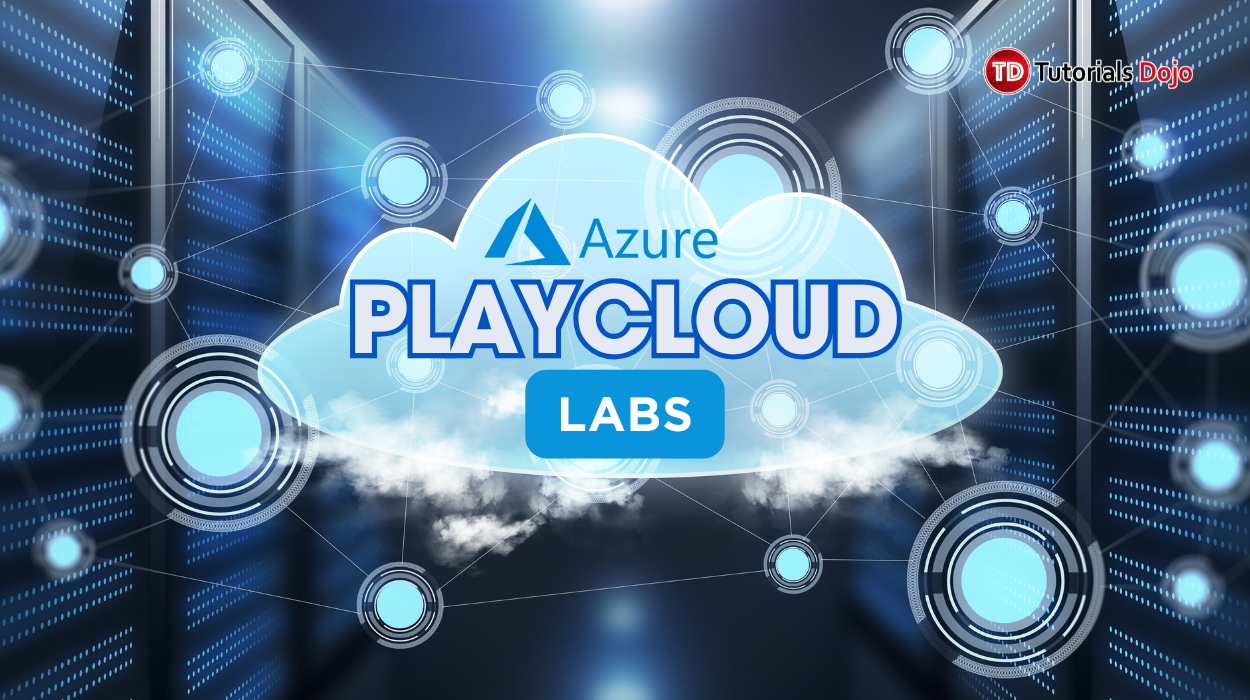If you have a business or kind of planning to start one, you’ve prolly heard one of the most overused quotes out there: “if you’re not growing, you’re dying.”
And sure, at some point, that’s true. Undeniably.
But you see, not every business has the time, resources, or skilled team to keep up with the competition. From personalized shopping experiences to smarter customer support… How?
Artificial Intelligence. Just a truly intelligent, always-on key part of how modern companies operate. AI became a requirement for all businesses to stand out and be on top in the market.
But are businesses really building AI from the ground up? Most of the time, no.
Because we now have AI as a Service (AIaaS) in the market that’s actually accessible for businesses of all sizes, even without deep tech expertise. Let me break down to you what AIaaS is, how it works, and how it can help your business move forward—on your terms.
What is AI as a Service (AIaaS)?
What does it actually mean to have “AI as a Service”?
Let’s put it in terms you’re already familiar with. You likely have used “Software as a Service” (SaaS) every day such as how you use Google Workspace for documents or Shopify for your e-commerce store. You simply pay a subscription to use a ready-made solution.
AIaaS applies that exact same, business-friendly logic to Artificial Intelligence.
While SaaS provides a complete, ready-to-use application (like your CRM or accounting software), AIaaS offers specific AI tools and algorithms. Instead of getting a finished product, you’re getting access to an AI engine that you can plug into your existing business systems to upgrade your own operations.
Basically, AIaaS is a cloud-based service from a third-party provider (like Amazon Web Services, Google, or Microsoft) that lets you integrate their pre-built AI capabilities directly into your own applications and processes.
Instead of facing the tasks of:
- Hiring a team of expensive AI specialists and data scientists,
- Buying and maintaining millions of dollars worth of computing hardware, and
- Spending years collecting data and training a custom AI model…
…you simply tap into AI tools through the cloud.
All the heavy lifting is already done for you. It’s a low-risk and cost-effective way to take advantage of powerful AI technology while minimizing the upfront costs and complexities of developing your own system.
How Does AIaaS Work?
Let’s get you down to the nitty-gritty of AIaaS. How do you actually connect your business to this service?
The concept of AIaaS is that a provider manages the complex AI infrastructure, while you access its power on a subscription or pay-as-you-go basis. Though many people think it’s all just about APIs. The best way to understand how it works is to think about what you want to accomplish.
How you access those capabilities depends on the type of service you need. Are you looking to quickly add a single, pre-built skill to your existing app? Do you need a full digital workbench to build a custom solution from scratch? Or do you just want to use a smarter piece of software where the AI is already built-in?
Here are the three main ways AIaaS works, based on what you’re trying to do.
-
The API Method (For Using Pre-Built AI)
This is the most common model and applies to services like NLP, computer vision, and basic bots. Your application makes a direct “call” to the provider’s AI via an API, sends a piece of data, and gets an intelligent result back almost instantly. You are consuming a finished AI skill.
-
The Platform Method (For Building Your Own AI)
This applies to Machine Learning Frameworks and Low-Code/No-Code services. Here, you aren’t just getting an answer; you’re using the provider’s entire workshop. You interact with a web-based platform where you can:
-
- Upload your own business data.
- Use their tools to train a custom AI model.
- Deploy that model without ever buying or managing a server.
The “work” is you using their platform to create your own unique AI asset. The end result is often a private API that only your business can use.
-
The Embedded Method (For AI-Powered Features)
This applies to services like an “Agent Copilot” or “AI-Powered QA” that exist inside a larger software product (like a CRM or support platform). In this case, you don’t interact with the AI directly at all. You simply use the software, and the AI works seamlessly in the background to enhance its features. The AI is a built-in benefit of a tool you’re already using.
Types of AIaaS
AIaaS includes a wide range of capabilities catering to different business needs. Instead of a single, one-size-fits-all product, it’s a suite of specialized services you can deploy based on your specific goals.
Here are the most common types of AIaaS available:
AI for Your Customer Experience
This is one of the most popular uses of AIaaS that focuses on making your customer support faster and smarter.
- AI Agents & Bots: These are the modern evolution of chatbots. They use Natural Language Processing (NLP) to understand what customers are asking and can handle a huge range of tasks on their own, 24/7. This includes answering common questions, checking an order status, or even processing a return.
- Agent Copilots: This is AI designed to help your human agents. While an agent is on a call or chat, the AI “copilot” listens in, understands the context, and suggests relevant answers or help articles in real-time. It’s like giving every support agent a brilliant assistant who helps them resolve issues faster.
- AI-Powered Quality Assurance (QA): Instead of manually reviewing a small fraction of customer calls, AI can analyze 100% of them. It automatically flags conversations where the customer was unhappy or at risk of churning, giving managers a complete picture of team performance and customer health
Ready-Made Intelligence via APIs
For businesses that want to embed AI into their own apps without building it from scratch, providers offer pre-built models through APIs. You just send your data and get an intelligent result back. Common types include:
- Natural Language Processing (NLP): Services that understand text and speech, used for sentiment analysis, translation, and transcription.
- Computer Vision: Services that analyze images and video to detect objects, recognize faces, or understand what’s happening in a scene.
- Predictive Analytics: Services that analyze your historical data to forecast trends or predict outcomes.
Platforms for Building Custom AI
When a pre-built solution isn’t quite right, you can use these platforms to create your own.
- Machine Learning (ML) Frameworks: These are toolkits (like Google Cloud AI or Azure Machine Learning) for your developers. They provide the software libraries and computing power needed to build, train, and deploy unique AI models tailored to your specific business data.
- No-Code & Low-Code ML: For teams without deep programming expertise. These platforms offer intuitive, drag-and-drop interfaces that allow your marketing or operations teams to build their own simple prediction models without writing a single line of code.
Artificial Intelligence of Things (AIoT)
AIoT embeds AI capabilities directly into internet-connected devices (the “Internet of Things”). For a manufacturing business, this could mean factory sensors that don’t just report data but also use AI to predict when a machine will need maintenance, helping you avoid costly downtime.
Foundational Data Services
Good AI needs good data. Since labeling massive datasets is a huge bottleneck, many providers offer Data Labeling and Classification services. They use a mix of AI and human experts to accurately tag your data (like categorizing images or annotating text) so it’s perfectly prepared for training a custom AI model.
Major AIaaS Providers
Choosing an AIaaS provider is the first major step in putting this technology to work for you. The market is led by some of the most established and reliable tech companies in the world.
Here’s a look at the key platforms where you’ll find these powerful, business-ready AI tools.
Amazon Web Services (AWS)
As the market leader in cloud computing, AWS offers the most mature and extensive suite of AI services. From its comprehensive Amazon SageMaker platform for building custom models to a huge menu of pre-built APIs, it provides the widest selection of tools, making it a go-to choice for businesses of all sizes that prioritize breadth and scalability.
Microsoft Azure
Microsoft Azure is a powerful competitor, especially for large enterprises already using Microsoft software. Its Azure Cognitive Services makes it easy to add pre-built AI capabilities into existing apps, while its partnership with OpenAI gives it a strong edge in generative AI. It’s the ideal platform for organizations seeking deep integration with their existing enterprise systems.
Google Cloud Platform (GCP)
Leveraging its deep roots in AI research, Google Cloud is often seen as the most innovative provider. Its Vertex AI platform offers a state-of-the-art environment for building and deploying machine learning models at scale. GCP is the perfect fit for data-intensive companies that need best-in-class tools for large-scale analysis and pattern recognition.
Other Key Players
Beyond these titans, other significant players include IBM, which leverages its Watson platform for deep, industry-specific solutions in sectors like finance and healthcare. You’ll also find specialized providers like OpenAI, which focuses exclusively on offering direct API access to its powerful generative models.
Use Cases: Where is AIaaS Making an Impact?
Where does the rubber actually meet the road with all this? Honestly, the question is quickly becoming less about where AIaaS is being used and more about where it isn’t. The most significant impact is happening in two major areas: how you interact with your customers, and how you run your business behind the scenes.
On the customer-facing side, this has moved far beyond basic chatbots that just point to a help page. We’re now at a point where AI can understand and resolve genuine customer issues on its own at like 3 AM, right before dawn. Your customers would feel more heard and valued, don’t they? You’re now able to turn a potential complaint into a moment of delight.
And behind the scenes, AIaaS is quietly doing just as much heavy lifting. It’s working in the background to spot issues early before they turn into real problems. It might be flagging a transaction that looks off, or predicting when a machine needs maintenance before it actually breaks down. This part isn’t visible to your customers, but it’s what keeps everything running smoothly.
So whether it’s supporting your team with faster answers, improving decision-making, or preventing costly delays, AIaaS helps both your front line and your foundation.
Good businesses only do what customers expect. Great ones invest in what happens when no one’s watching.
Benefits of AIaaS for Businesses
Okay, we’ve covered a lot of ground on the what, how, and who. But when you boil it all down, what’s the actual bottom-line impact for your business? Why should you care?
It comes down to a few benefits that were practically unthinkable just a decade ago.
Massive Cost Reduction & Democratization of AI
Traditionally, deploying AI meant a massive upfront capital investment including hiring PhDs, buying powerful servers, and spending years on development. AIaaS completely flips that script. It turns AI into a predictable operating expense, just like your electricity bill. You don’t have to build the power plant; you just pay for the power you use. This is what truly “democratizes” AI, allowing smart startups and mid-sized businesses to leverage the same kind of power that was once reserved for tech giants.
Incredible Speed and Agility
The old way of building an AI model was a multi-year marathon. With AIaaS, you can go from an idea to a working prototype in weeks, sometimes even days. This speed gives you incredible agility. You can test a new AI-powered feature, see if your customers like it, and decide whether to scale it or scrap it without betting the entire farm. In today’s fast-moving market, being able to experiment and deploy this quickly is a massive competitive advantage.
Access to World-Class Expertise
Let’s be honest: hiring a full-time team of top AI researchers is out of reach for nearly every company. AIaaS gives you a backdoor pass to that same level of expertise. You are effectively tapping into the billion-dollar research and development budgets of companies like Google, AWS, and Microsoft. You get to use their state-of-the-art models, which are constantly being updated and improved by the best minds in the field, all through a simple API call.
Effortless Scalability
What happens if your app suddenly gets ten times the traffic overnight? In the old model, your servers would melt. With AIaaS, the platform handles it without breaking a sweat. Because you’re building on the massive, global infrastructure of a cloud provider, the service scales with your demand automatically. This lets you focus on growing your business without ever worrying if your technology can keep up with your success.
Challenges and Considerations
Now, to get the most out of AIaaS, you have to be just as smart about its challenges as you are about its benefits. Like any powerful business tool, you have to go in with your eyes wide open. You need to be aware of the potential bumps in the road. Y’know, it’d be a mistake to pretend everything would turn out perfectly fine.
So here are a few key things to keep in mind with how you want to use AIaaS.
Your AI Is Only as Good as Your Data
There’s a classic saying in tech: “garbage in, garbage out.” It has never been more relevant than with AI. If your customer data is a mess—full of errors, duplicates, or incomplete records—you can’t expect an AI to produce brilliant insights. Before you even think about plugging in a service, take a hard look at your data quality. On a related note, remember that you are trusting a third party with your valuable business data. You need to be comfortable with their security and privacy policies from day one.
The Costs Can Creep Up on You
One of the biggest benefits of AIaaS is avoiding a massive upfront investment. But the flip side of a flexible, “pay-as-you-go” model is that costs can spiral if you’re not paying attention. Think of it like a utility bill. If you leave all the lights on, you’ll be in for a shock. It’s crucial to set budgets, use the provider’s monitoring tools, and have a clear understanding of what you’re spending and the value you’re getting in return.
It’s Not a “Set It and Forget It” Solution
While AIaaS removes the need to build models from scratch, it doesn’t remove the need for human oversight. An AI is a powerful tool, not a replacement for your own expertise and common sense. Models can get things wrong, misinterpret nuanced customer conversations, or produce unexpected results. You still need smart humans to set the strategy, review the AI’s performance, and handle the complex situations that only a person can. Think of it as augmenting your team, not automating it entirely.
Be Mindful of Vendor Lock-In
The big cloud providers make it incredibly easy to get started with their services. They also, by design, make it difficult to leave. Once you build your internal processes and applications around one provider’s specific set of APIs and tools, migrating to a competitor can be a massive technical and financial headache. When you choose a provider, you’re not just picking a tool for a single project; you’re likely choosing a major, long-term partner for your business.
Conclusion
The grace period for ignoring AI is over. What was a forward-thinking “what if” conversation just two years ago has become a stark operational reality today. The technology is here, the price of entry has been erased, and your competitors are already making their moves.
AI has already proven it can outperform average. The conversation is no longer about if you should use AI, but where you can’t afford not to.
The smart leaders aren’t asking, “What’s our AI strategy?” They’re asking, “What are we still doing manually, and why?”
That single question is already separating the winners from the losers. And sooner than you think, it may be the only one that really matters.
If you’re still waiting for the “right time,” you’re already behind.
References
What is AIaaS? Understanding Artificial Intelligence as a Service
What is AI as a service (AIaaS)?
AI as a Service: Top AIaaS Vendors for All Types of Businesses
Guide to AI as a Service (AIaaS): Benefits, Types, Companies
What is artificial intelligence as a service (AIaaS)?
Understanding AI as a Service (AIaaS): Exploring Its Types and Applications

